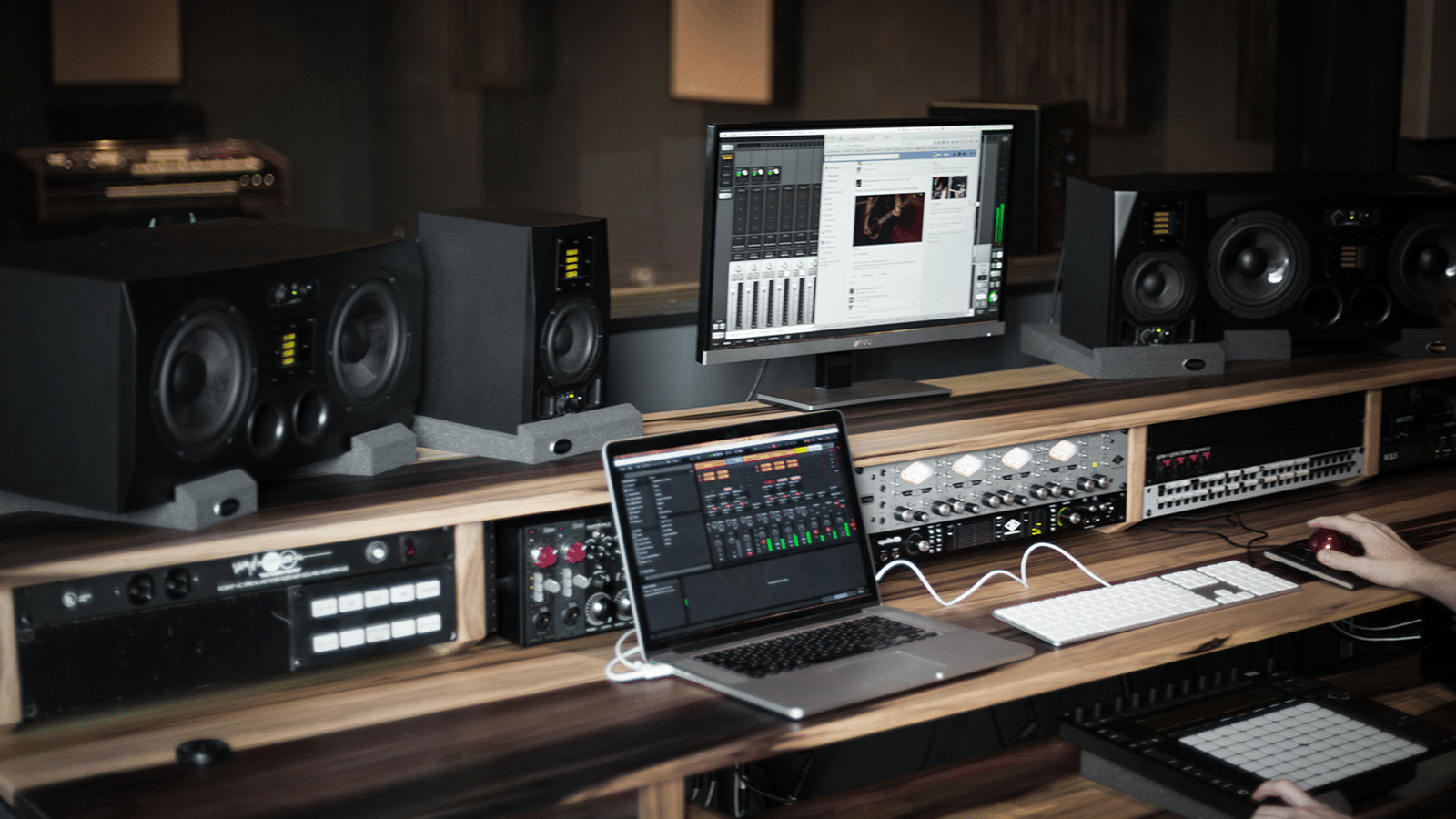
As musicians, it’s easy for technology to take over when you’re finding your sound in the digital age. But it’s important to remember that in a competitive and saturated market, a unique voice is what counts most.
A David Gilmour Pink Floyd guitar solo is instantly recognizable, just like a Deadmau5 synth pulse or a John Williams melody. Whether it’s a ballad or an angst-ridden dance track, they’re instantly identifiable.
So how do you tap into your one-of-a-kind inner voice? Here are a few technical tips from Gregg Lehrman, Output CEO and founder, to help you on your path toward finding your sound as a musician.
1. Master your voice (and tools)
Spend the time to master a few of your favorite tools like MIDI keyboard controllers, sample libraries, and modular synths. Presets are great starting points, but remember with those you’re working from another sound designer’s tool kit.
When you know a tool or instrument inside and out, you can create your own presets that incorporate your specific style, instead of using someone else’s. Consider spending a few days building music presets so that when you reach for a particular tool, it’s 100 percent you.
Bottom line: The better you know your instrument, the more you’ll understand how to find your own voice as an artist.
Check out how easy a plugin like Output’s REV makes it:
2 . The first idea isn’t always the best
I had a client ask me to deliver three to five rough sketches for each final track we’d end up producing. I quickly learned that my first “good” track (or the one I normally would have completed) was rarely the best or even one of our favorites. This was an extremely valuable lesson.
Before you spend hours, days, weeks, or even months fleshing out a track, make sure it’s the right one. Start with an idea, and when you like it, leave it and move on to a few more. The next day, pick your favorite and make that your new starting point. Sometimes, the first idea will be the best choice, but finding your ideal sound might come after working on a few different sketches.
“Sometimes, the first idea will be the best choice, but finding your ideal sound might come after working on a few different sketches.”
3. Impose limitations
These days, we have practically unlimited sounds and track counts, which makes for a giant blank canvas. As a result, we often build vertically instead of horizontally.
Consider the following: Do you come up with an interesting progression and immediately start adding layer after layer? While you’ll sometimes find the right stride, you’re often building the wrong track (see the previous tip).
Push yourself to limit yourself to two tracks to start. These can be monophonic or polyphonic; percussion or melodic instruments. It doesn’t matter. Stick with these two tracks until you are 100 percent satisfied, and when you’re ready to move on, lock them down (i.e., print them to audio). Pretend that you’re laying it down on tape and that it can’t be changed. If you do, you’ll focus more on the performance (like bands used to) and you’ll ensure satisfaction before you move on.
4. Quantize less
We all quantize — and that’s fine, it’s a great tool — but doing it less will help humanize your music. I’m not saying that you have to remove it completely, but try to bring down the settings so that it’s at 75 percent or less. If you play things in a natural manner, it reveals more of your own personal voice.
On the production side, sounds are sometimes thinner when they all start at the exact same time. By using quantization more sparingly, you can actually stagger the attacks, making sounds fatter (and more powerful). There are so many ways to trick a music listener’s ears, and this is a great place to start practicing.
“If you play things in a natural manner, it reveals more of your own personal voice.”
5. Collaborate more
Most musicians weren’t meant to play alone, isolated in a room. Finding your sound as an artist might actually occur when you work with others. When you think that you’ve got an idea down, send it to a friend or a musician and see what they’d add. If you’re suffering from writer’s block, this might snap you out of it.
Collaborators bring lots to the table, and a fresh perspective can help you hone in your musical sound. Keith Richards and Mick Jagger created far more classics together than they did alone. Edit or tweak the suggestions. Use it all or none of it: Whatever your decision, it should help you clarify what works and what doesn’t.
6. Shake up the parameters
No one wants to write the same track over and over. Yet, most musicians start with the same meter, tempo, and key, then find themselves pressured into making drastic changes to create new results.
Why not change up the parameters and see where it takes you? The end result will sound quite different, but it should still sound like you. And isn’t a unique and identifiable sound your end goal? It might not seem so important, but having a sound is the essence of who we are.
Want to take your production even further? Here’s our guide on how to humanize your beats in 30 seconds.



